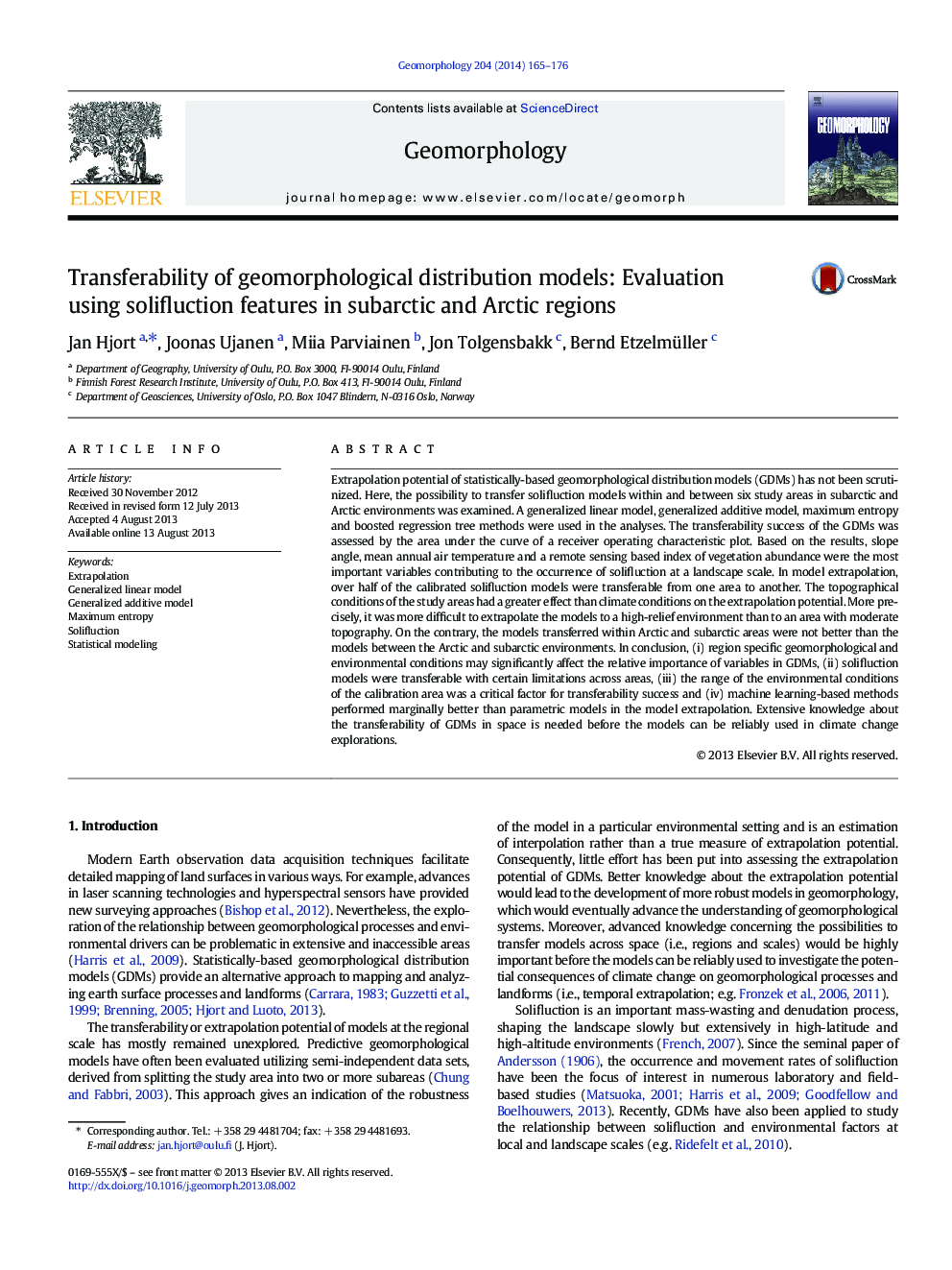| کد مقاله | کد نشریه | سال انتشار | مقاله انگلیسی | نسخه تمام متن |
|---|---|---|---|---|
| 6432718 | 1635445 | 2014 | 12 صفحه PDF | دانلود رایگان |
- Solifluction models were transferable with certain limitations across areas.
- Properties of the calibration area were critical for the transferability success.
- Topographical conditions affected the extrapolation potential more than the climate.
- Machine learning based models performed marginally better than parametric models.
- Maximum entropy method was successfully applied in geomorphological modeling.
Extrapolation potential of statistically-based geomorphological distribution models (GDMs) has not been scrutinized. Here, the possibility to transfer solifluction models within and between six study areas in subarctic and Arctic environments was examined. A generalized linear model, generalized additive model, maximum entropy and boosted regression tree methods were used in the analyses. The transferability success of the GDMs was assessed by the area under the curve of a receiver operating characteristic plot. Based on the results, slope angle, mean annual air temperature and a remote sensing based index of vegetation abundance were the most important variables contributing to the occurrence of solifluction at a landscape scale. In model extrapolation, over half of the calibrated solifluction models were transferable from one area to another. The topographical conditions of the study areas had a greater effect than climate conditions on the extrapolation potential. More precisely, it was more difficult to extrapolate the models to a high-relief environment than to an area with moderate topography. On the contrary, the models transferred within Arctic and subarctic areas were not better than the models between the Arctic and subarctic environments. In conclusion, (i) region specific geomorphological and environmental conditions may significantly affect the relative importance of variables in GDMs, (ii) solifluction models were transferable with certain limitations across areas, (iii) the range of the environmental conditions of the calibration area was a critical factor for transferability success and (iv) machine learning-based methods performed marginally better than parametric models in the model extrapolation. Extensive knowledge about the transferability of GDMs in space is needed before the models can be reliably used in climate change explorations.
Journal: Geomorphology - Volume 204, 1 January 2014, Pages 165-176
